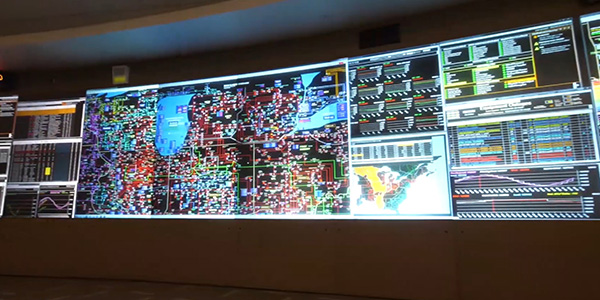MISO has developed a rough idea of how it might manage dynamic transmission line ratings should FERC require variable ratings.
Brian Kiefer, manager of operations support engineering, said the process involves compiling a list of facilities that have bound in the real-time market in the past two years and could be ripe for ambient adjusted ratings (AARs). The list is ranked by the facilities’ marginal costs of congestion and provided to transmission owners.
Kiefer said that in the inaugural list, staff singled out 504 transmission facilities that stand to save the most in congestion costs by adding additional megawatts in line capacity.
TOs will evaluate the candidates and let MISO know by July 1 if any are contenders for AARs, Kiefer said during a Reliability Subcommittee meeting Thursday. He said the grid operator and its TOs plan to repeat the process on a quarterly basis.
MISO’s preparations are a response to stakeholder requests that predate FERC’s January Notice of Proposed Rulemaking to require all overhead lines be equipped with real-time and forecasted AARs, if possible.
“We were thinking and moving on this idea before the [NOPR] came out,” Executive Director of System Planning Aubrey Johnson said late last year.
TOs currently tabulate and provide MISO with line ratings for more than 16,000 lines, most of which remain unchanged season to season. Staff incorporate the ratings in reliability criteria and congestion-management controls; it can verify the ratings or ask TOs for more information behind their ratings methodology. In MISO South, Entergy provides hourly and current AARs to the grid operator through file transfers.
“MISO currently operates against the information we’re given by the TOs,” Kiefer said. “MISO does not have the in-the-field knowledge to say if a particular piece of equipment should be in an [AAR] program or not. We’re not in a good position to make those judgements.”
Marcus Hawkins, executive director of the Organization of MISO States, asked whether the RTO would share more details on its evaluation or the TOs’ assessment of candidates.
“I think it’s still early in the process,” Kiefer said. “And that’s going to be actively discussed and something to consider.”
MISO has said that while applying real-time ratings should be an easy lift, implementing forecasted adjusted ratings will require significant software work to set up a data exchange system between itself and TOs.
Kiefer told stakeholders not to expect that AARs or similar technology would supplant the need for new transmission infrastructure.
“It’s an efficiency but not a replacement,” he said. “It’s not a slam dunk to eliminate all congestion, but it should certainly help.”




